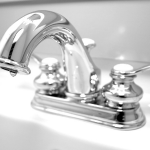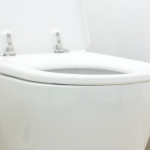
Three Interesting Facts About Plumbing Systems
It's everywhere. It's in the walls. It's under the floor. It's indoor plumbing, the unsung hero of the modern area. It may interest some to know that people have relied on these intricate systems to bring in crisp drinking water and carry out waste since the dawn of civilization. Everyone from Socrates to Queen Elizabeth has relied on some plumbing system.
Indoor plumbing is one of the many things that homeowners take for granted. Some may find it interesting to learn about the history of toilets, sinks, and other ceramic friends, which is covered in more detail below.
A Toilet Is a Toilet by Any Other Name 
Through the years, toilets have gone by many names. The porcelain throne. The loo. The lavatory. But why are they sometimes called "the John"? Some sources suggest that the name refers to an actual person, Sir John Harrington, credited with being the inventor of the first flush toilet. A sixteenth-century poet, Harrington was Queen Elizabeth I's godson.
Before his invention became popular, people referred to toilets as "jakes." Harrington originally named his invention "Ajax," a play on the word "jakes." However, over time, Harrington's first name became associated with his creation, and thus the phrase "john" came about.
What Does the Coriolis Effect Have To Do With Plumbing?
For years, many people have held the misconception that water in the toilet bowl spins clockwise upon flushing. This theory hinges on the Coriolis effect, which is when something spins along with the Earth's rotation. In the northern hemisphere, cyclones and hurricanes rotate counterclockwise because that is how the world spins. However, in the southern hemisphere, cyclones and hurricanes spin clockwise - the opposite of how the world turns.
But the toilet bowl water is too little to be impacted by the Coriolis effect. The direction of the water depends on the jets inside the toilet itself.
A Leaky Faucet Waste Can Waste Thousands of Gallons a Year
At a glance, the intermittent droplets coming out of a leaky faucet may not seem like much. But over time, they can add up. How much water a leaky faucet wastes depends on various factors, including the speed at which the water flows. Suppose that a leaky faucet dripped one droplet of water a second. Over one year, that can add up to over 3,000 gallons! In another example, suppose that water dripped out of a faucet every minute. Over a year, that would equal 34 gallons of wasted water.

A leaky faucet not only affects the environment but can seriously affect a homeowner's wallet. Homeowners should address these issues promptly to promote maximum efficiency.
Contact Magic Plumbing Today
For over 40 years, Magic Plumbing has helped homeowners in San Francisco, CA with their plumbing needs. The company prides itself on delivering amazing customer service with no upsells, no tricks, no gimmicks. To learn more about their general plumbing services, homeowners can get in touch with Magic Plumbing today. Call now for plumbing services!
Distribution Links +
- ktvn.com
- wicz.com
- wboc.com
- snntv.com
- rfdtv.com
- wfmj.com
- htv10.tv
- central.newschannelnebraska.com
- metro.newschannelnebraska.com
- southeast.newschannelnebraska.com
- midplains.newschannelnebraska.com
- northeast.newschannelnebraska.com
- plattevalley.newschannelnebraska.com
- panhandle.newschannelnebraska.com
- rivercountry.newschannelnebraska.com
- wrde.com
- wpgxfox28.com
- wdfxfox34.com
- lifestyle.mykmlk.com
- wtnzfox43.com
- lifestyle.3wzfm.com



